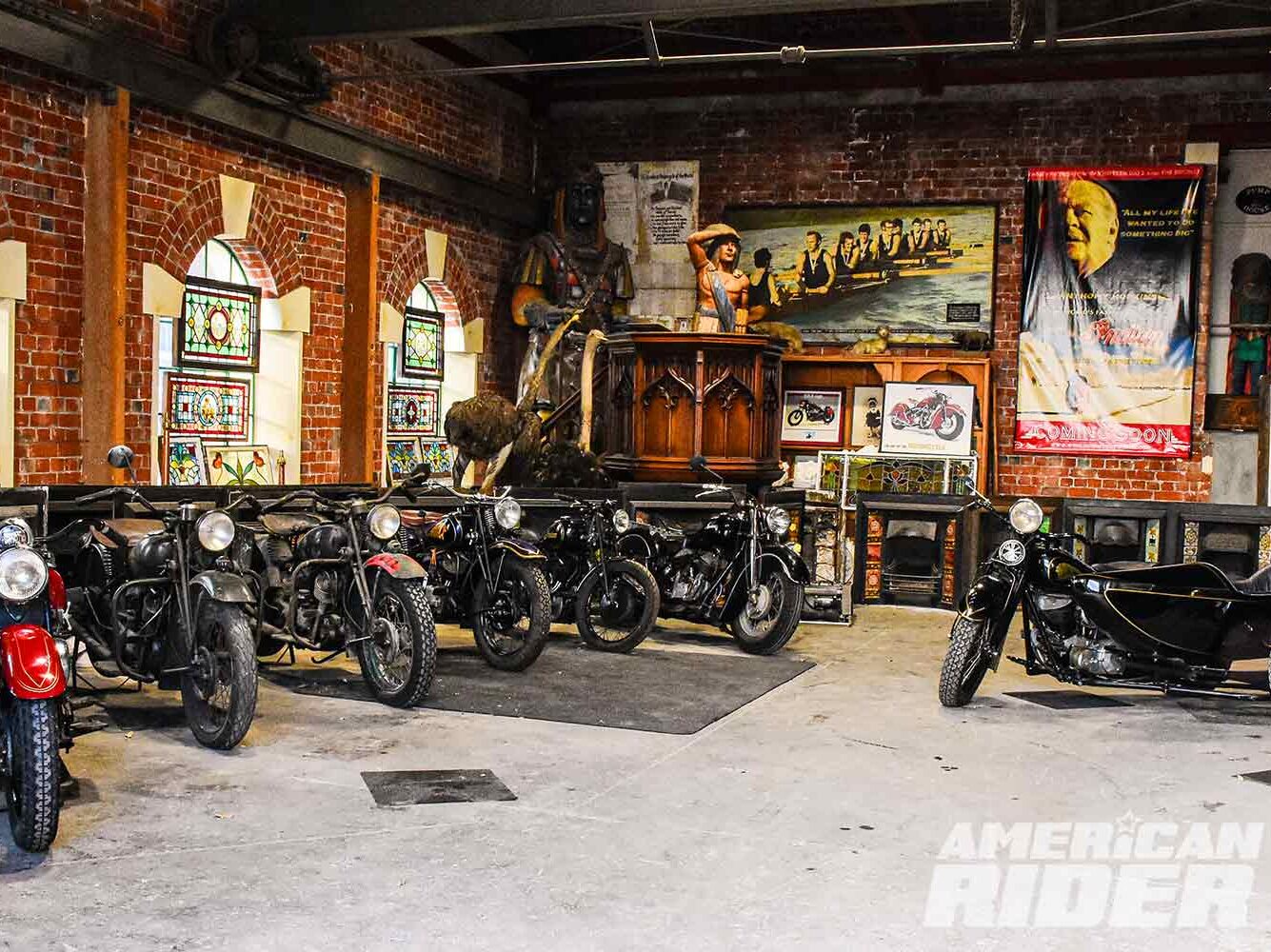New Zealand celebrated its newly created annual holiday last June honoring Matariki, a Māori name for a cluster of stars also known as the Pleiades, which rise in the Southern Hemisphere sky in late June and mark the start of the Māori New Year. June 24 has hence become the country’s first indigenous public holiday.

The Matariki celebration inspired motorcycle collector Paddy Snowdon to put together a classic and custom bike show for bikes built prior to 1985. It was held at Snowdon’s shop at the Pumphouse Demolition Yard in Christchurch, New Zealand.
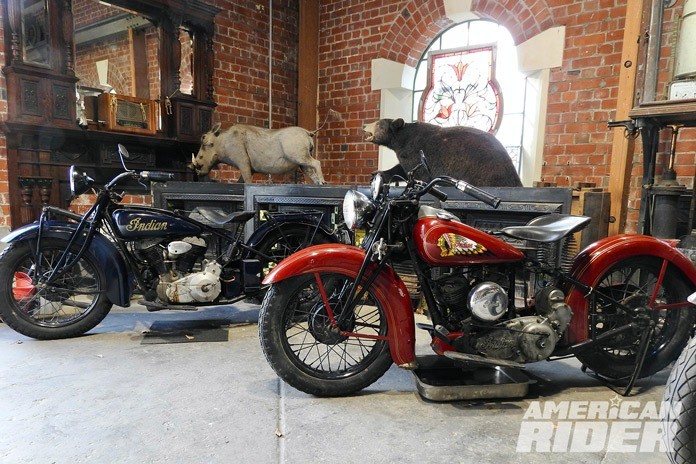
The Pumphouse buildings were a cornerstone of the city’s earliest sewage system, constructed in the 1880s. The buildings now house Snowdon’s business of buying and selling recycled building materials and house parts.
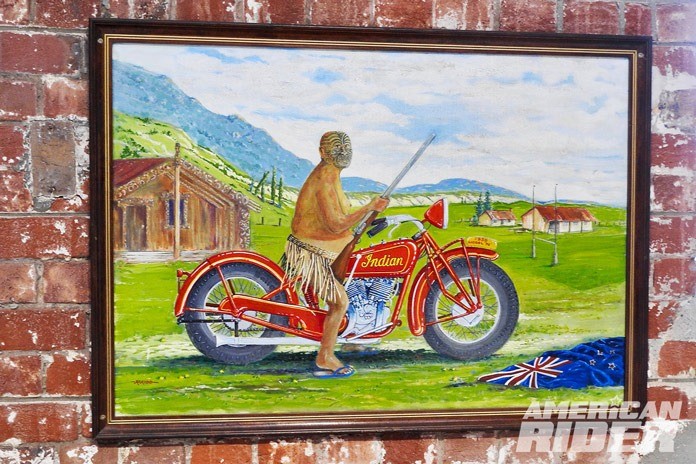
Despite a frosty 33-degree start, the event did not disappoint. The scope of the show included a wide variety of vintage bikes, but for this story, we’ll concentrate mostly on American V-Twins.
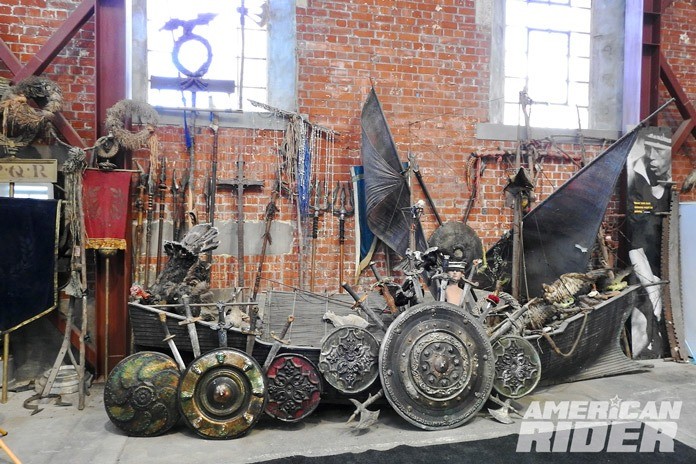
The Pumphouse Main Hall hosted some of Snowdon’s 18-plus Indians, including his blue 1,350cc Indian Chout, which he’s owned for 20 years, and his black 1948, which he’s had for more than 30 years. The building also has a colorful collection of architectural antiques on display.
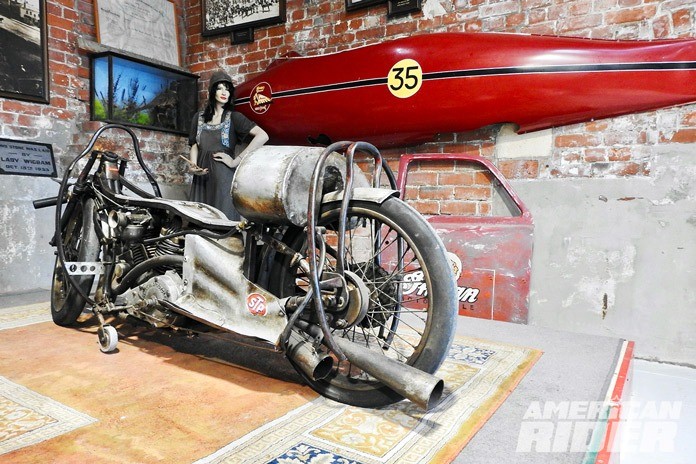
Passing through to the adjoining building, a stylish display dedicated to Burt Munro of World’s Fastest Indian fame awaited the punters. A replica of the Bonneville Indian was flanked by a red Munro tribute Indian that’s been raced by Lee Munro, the great nephew of Burt Munro. Both replicas were built by Wayne Alexander.
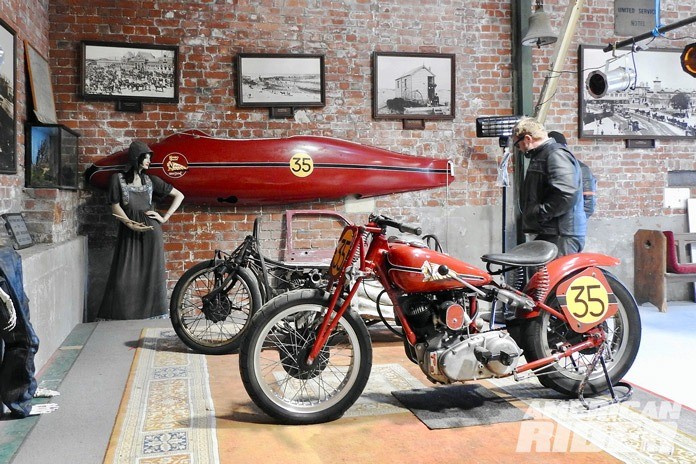
Outside in the courtyard was an assembly of classic racers, including Charlie Finch’s incredible contraption. He began with a Norton Featherbed slimline-frame and squeezed in an Ironhead S&S motor stroked to 1,180cc and running on methanol. With the exception of the bike’s Honda fork and ’70s-era Lockheed brakes, Finch fabricated practically everything, including the fuel system, fuel tank, and other components.
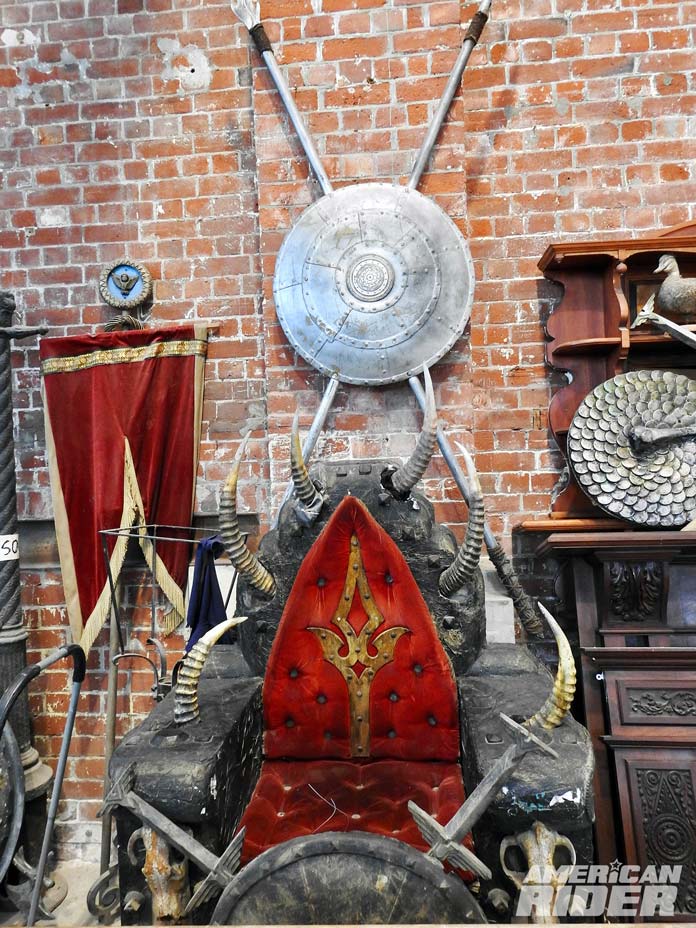
Finch had a couple of friends race the bike for him in the 1980s and ’90s, and he reckons it’s done all right over the years. After having been put away for many seasons, it was resurrected when Finch’s son decided to have a play on it. Sadly, the motor blew up in a race, so wire ropes now hold the engine together.
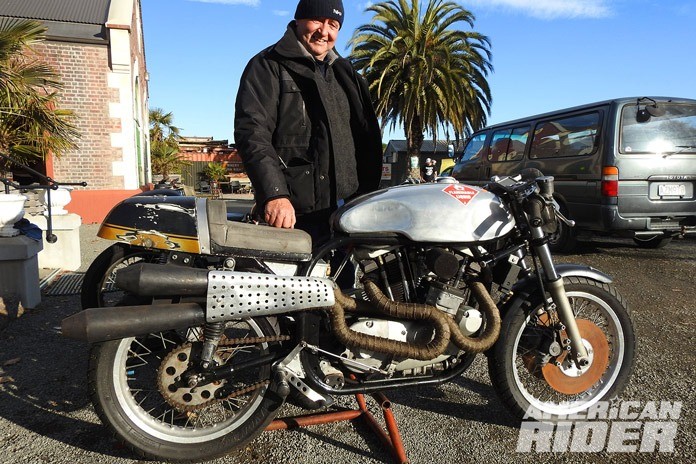
Toward the fence line was a very rare James V-Twin. James Cycle Company made motorcycles in England, and the 1928 500cc V-Twin at the show was once owned by the James family. It was brought by David Richardson, whose ex-wife is a member of the James clan. Her great-great grandfather was Harold James, the founder of the English company.

Richardson restored the bike 40 years ago, back when you had to write letters for hard-to-get parts because there was no other such model to be found in New Zealand. Richardson unfortunately had a shed fire years ago, and some of the restoration work he’d done was lost, but he was able to restore it again once he retired.
Also in the yard was a cut-down Harley owned by David Reidie, who followed the formula of Californian hot-rodders from the 1930s and ’40s: Get a standard Harley from the ’20s, use the 2-cam engine, and then chop the bike down to make it smaller and more compact.
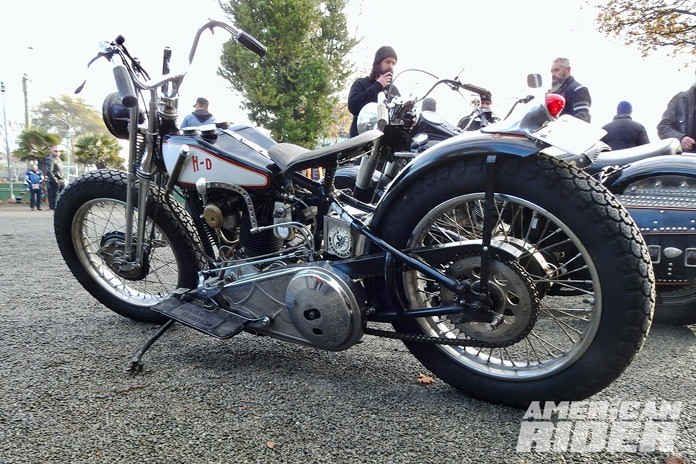
Reidie’s 1928 Harley is a real hot rod, with a 74-inch motor and looking quite different from what the standard bike looked like in its day. He’s owned the bike for 15 years and rides it regularly. Not just built for show, Reidie has raced the bike at the Burt Munro hillclimb and quarter-mile events in Munro’s old hometown of Invercargill.
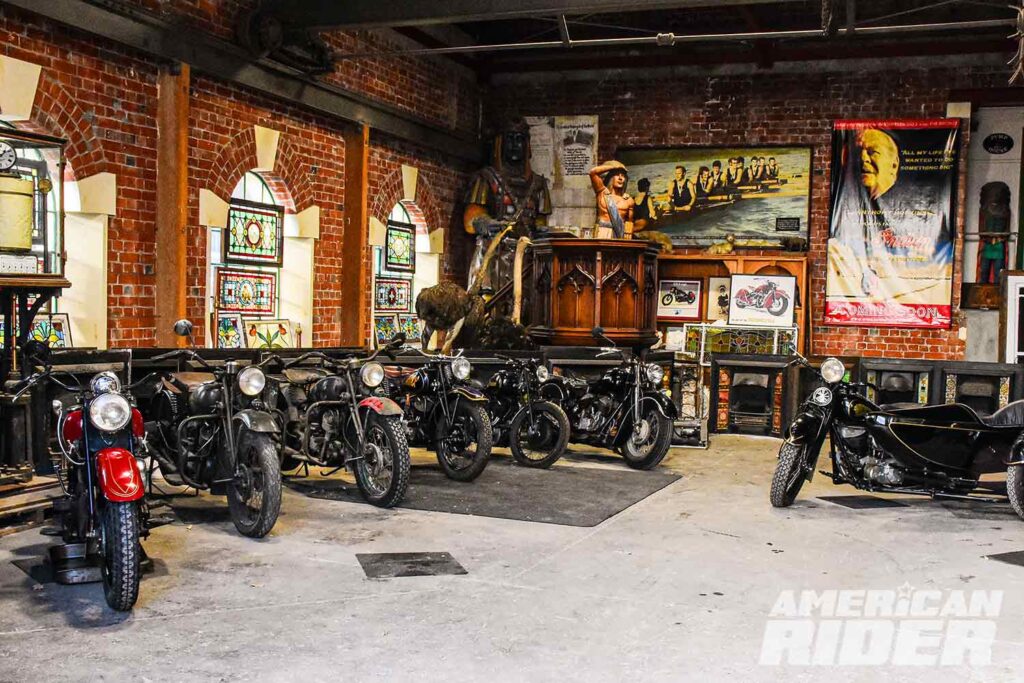
Reidie was a long-time owner of a Harley-Davidson dealership in Melbourne, Australia, and simultaneously started collecting antique motorcycles, mostly Milwaukee’s finest. In 1993, he and Peter Arundel co-founded the Great Race, an annual challenge between vintage Harley and Indian owners in Australia.
Farther up in the yard was a fine selection of vintage Harleys belonging to Bob Brookland. In addition to being a dyed-in-the-wool vintage Harley guy, he was also the man responsible for painting every single Britten motorcycle during that brand’s illustrious history in Christchurch.
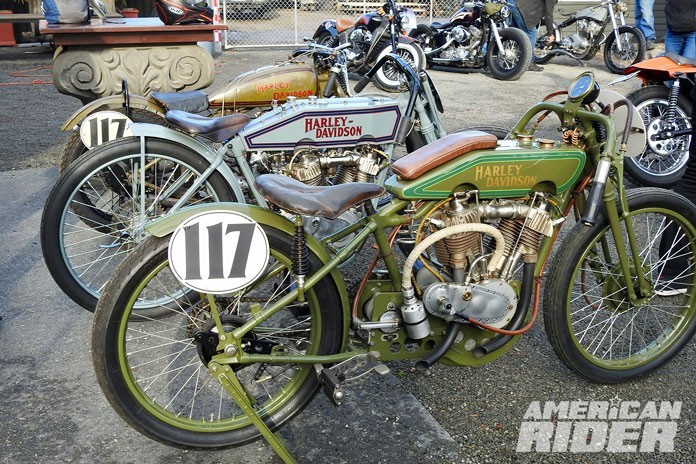
Brookland’s Peashooter Harley won the Best American trophy at the show. It’s a 1929 model formerly raced on speedway and dirt tracks by a Harley mechanic named Ernie Brown, and it’s kept in the last form it was raced when it competed against Jawa speedway bikes.
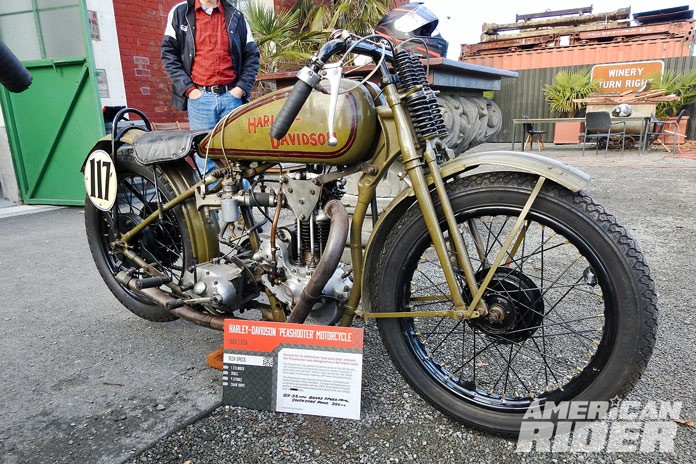
Brown modified the Peashooter as the years went by to keep up with more modern bikes. He made his own aluminum head and used a camshaft of his own design. He also cut the back end of the frame to make room for a Triumph gearbox instead of driving directly from the countershaft, which operated only as a single-speed transmission.
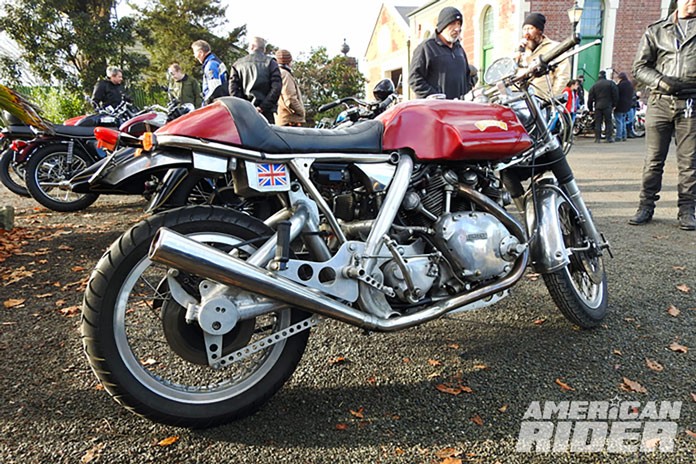
When Brown got on in years, Brookland rode the bike at speed trials, taking it up to 89.3 mph at a race event in Christchurch. This is a very respectable figure for an old 350cc vintage Harley, yet Brown was somewhat disappointed his bike didn’t quite hit the 90-mph mark. Always a racer.

Brookland’s affection for Harleys is deep. He also brought a 1917 pocket-valve racer bought many years ago as an absolute basketcase, with its frame partially buried in the ground and the entire bottom tube rotted off. Paul Nixon from Invercargill modified the top part of the frame with a curved tube, as well as a new loop along the bottom of the 61ci V-Twin to complete the package. Brookland fabricated the fuel tank to replicate the bike’s former glory.
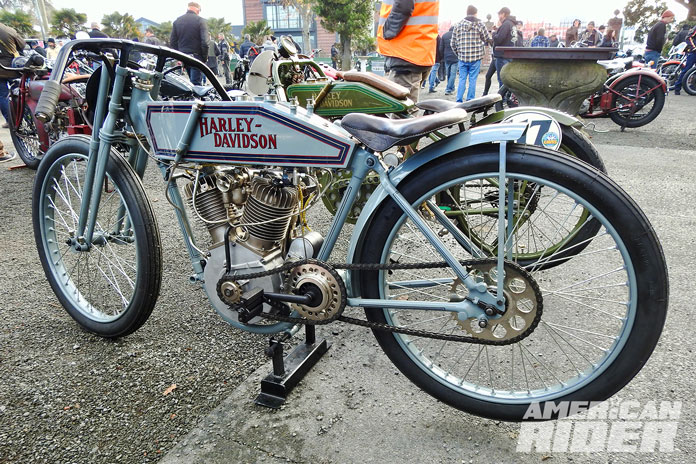
The V-Twin has a rotating barrel carburetor on it, which was the hot stuff they used back in the day. The carb barrel rotates and goes from a closed hole to a smooth bore all the way through when opened up.
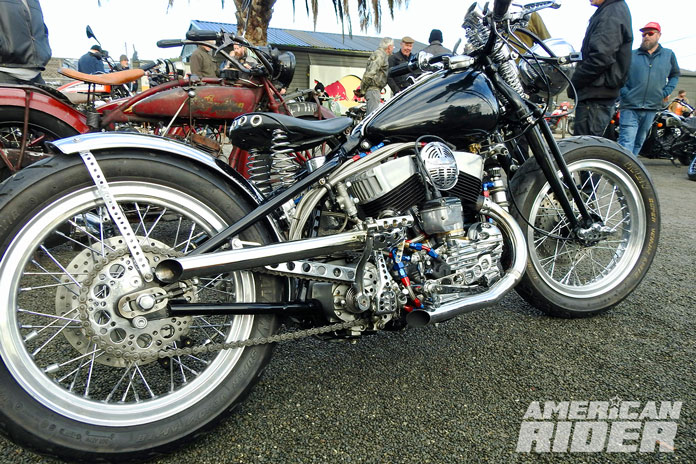
Brookland said the bike runs really well, but it’s a single-speeder, so it takes a bit of finesse with the speedway Jawa clutch to get it off the line. He’s also learned to keep his right foot positioned to the rear of the footpeg so it doesn’t get roasted from the rear exhaust pipe outlet. Brookland raced the bike up to 98.5 mph at a BEARS speed trial and claimed it was so smooth that he could ride at that speed with one hand.

Brookland’s blue 1915 1,000cc Harley V-Twin was once owned by his buddy Tom Smith. When Smith got the bike, it had the wrong barrels and didn’t have any valve gear, and it was missing many other bits. Brookland helped Smith out with parts from his own stash and also painted and pinstriped it for him. Before Smith passed away, he bequeathed this bike to Brookland.
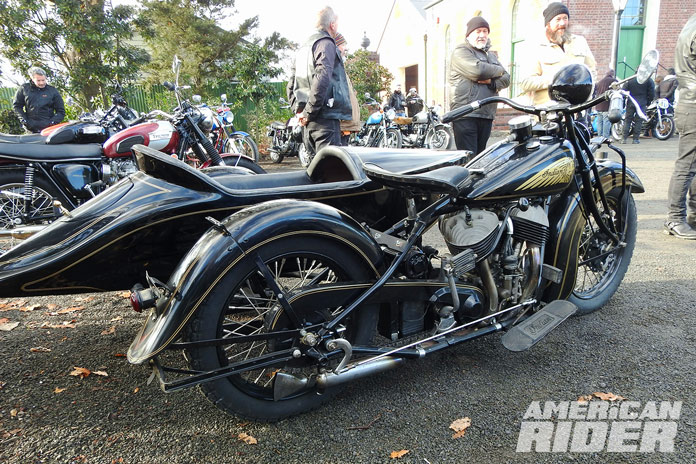
The Matariki Bike Show was a perfect way to celebrate vintage motorcycles during the Māori New Year. The 2023 show will take place June 24.


